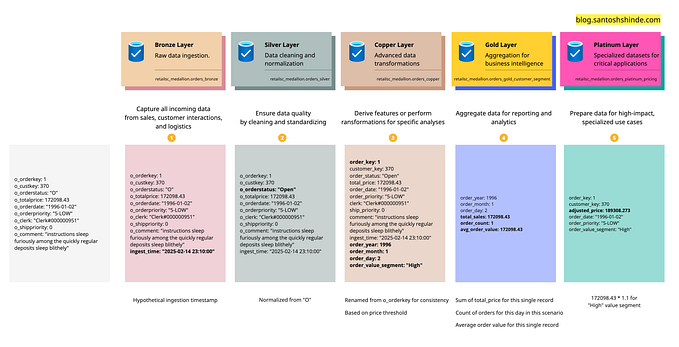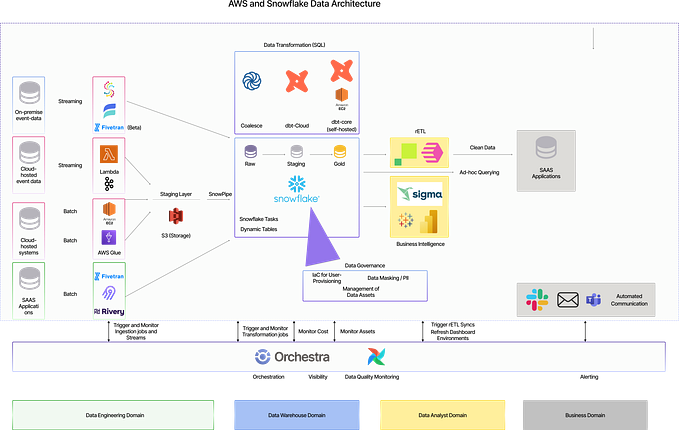How a Dedicated Data Warehouse Yields Better Insight than Your CRM or ERP

What percent of your enterprise data goes completely untapped? It’s far more than most organizations realize. Research suggests that as much as 55% of global enterprise data goes unused. The reasons are varied (we can get to the root cause with a current state assessment) but one growing problem stems from misconceptions about CRMs, ERPs, EHRs, and similar operational software systems.
The right operational software systems are valuable tools with their own effective reporting functions. The foundation of any successful reporting or analytics initiative depends on two factors: on a centralized source of truth that exists in a unified source format. All operational software systems struggle to satisfy either aspect of that criteria.
Believe it or not, one of the most strategic systems for data-driven decision-making is still a dedicated data warehouse. Here is the value a data warehouse brings to your organization and the necessary steps to implement one that enhances the accuracy and insight of your analytics.
CRMs & ERPs Are Data Silos with Disparate Formats
Operational software systems are often advertised as offering a unified view, but that’s only true for their designed purpose. CRMs offer a comprehensive view of customers, ERPs of operations, and EHRs of patient or member medical history. Yet outside of their defined parameters, these systems are data silos.
In an HBR blog, Edd Wilder-James captures the conundrum perfectly. “You can’t cleanly separate the data from its intended use. Depending on your desired application, you need to format, filter, and manipulate the data accordingly.”
Some platforms are enabled to integrate outside data sources, but even that provides you with a filtered view of your data. Not the raw and centralized view necessary to generate granular and impactful reports. It’s the difference between abridged and unabridged books — you might glean chunks of the big picture but miss entire sections or chapters that are crucial to the overall story.
Building a dedicated data warehouse removes the question of whether your data sets are complete. You can extract, transfer, and load data from source systems into star schemas with a unified format optimized for business users to leverage. The data is formatted around the business process rather than the limitations of the tool. That way, you can run multifaceted reports or conduct advanced analytics when you need it — without anchoring yourself to any specific technology.
Tracking Down Your Data Sources
In all honesty, organizations not familiar with the process often overlook vital information sources. There might be a platform used to track shipping that only one member of your team uses. Maybe there’s a customer service representative who logs feedback in an ad hoc document. Or it’s possible there’s HIPAA compliant software in use that isn’t automatically loading into your EHR. Regardless of your industry, there are likely gaps in your knowledge well outside of the CRMs, ERPs, EHRs, and other ostensibly complete data sources.
How do you build a single source of truth? It’s not as simple as shifting around a few sources. Implementing a dedicated data warehouse requires extensive planning and preparation. The journey starts with finding the invisible web of sources outside of your primary operational software systems. Those organizations that choose to forgo a full-fledged current state assessment to identify those hidden sources only achieve fragmentary analytics at best.
Data warehouse implementations need the guidance and buy-in at the corporate level. That starts with a well-defined enterprise data strategy. Before you can create your strategy, you need to ask yourself questions such as these:
- What are your primary business objectives?
- What are your key performance indicators?
- Which source systems contribute to those goals?
- Which source systems are we currently using across the enterprise?
By obtaining the answers to these and other questions from decision makers and end users, you can clarify the totality of your current state. Otherwise, hunting down those sources is an uphill battle.
Creating Data Warehouse Value that Lasts
Consolidating your dispersed data sources is just a starting point. Next, you need to extract the data from each source system and populate them within the data warehouse framework itself. A key component of this step is to test data within your warehouse to verify quality and completeness.
If data loss occurs during the ETL process, the impact of your work and veracity of your insights will be at risk. Running a variety of different tests (data accuracy, data completeness, data transformation, etc.) will reduce the possibility of any unanticipated biases in your single source of truth.
What about maintaining a healthy and dynamic data warehouse? How often should you load new data? The answer depends on the frequency of your reporting needs. As a rule of thumb, think in terms of freshness. If your data has gone stale by the time you’re loading it into your data warehouse, increase the frequency of your data refresh. Opt for real-time analytics if it will provide you with a strategic advantage, not because you want to keep current with the latest buzzword.
Improving Your Results with an Outsourced Partner
Each step in the process comes with its own complications. It’s easy to fall into common data warehousing pitfalls unless you have internal resources with experience pinpointing hidden data sources, selecting the right data model, and maintaining your data warehouse post-implementation.
One of our clients in the healthcare software space was struggling to transition to a dynamic data warehousing model that could enhance their sales. Previously, they had a reporting application that they were using on a semi-annual basis. Though they wanted to increase the frequency of their reporting and enable multiple users to run reports simultaneously, they didn’t have the internal expertise to navigate these challenges confidently.
Working with Aptitive made a clear difference. Our client was able to leverage a data warehouse architecture that provided daily data availability (in addition to the six month snapshot) and self-service dashboards that didn’t require changes or updates on their part. We also set them on the right path to leverage a single source of the truth through future developments.
Our strategies in that project prioritized their people rather than a specific technology. We considered the reporting and analytics needs of their business users rather than pigeon-holing their business into a specific tool. Through our agnostic approach, we guided them toward a future state that provided strategic advantage and a clear ROI that might have otherwise gone unachieved.
Want your data warehouse to provide you with a single source of the truth? Schedule a whiteboard session to review your options and consolidate your data into actionable insight.
Originally published at https://aptitive.com on January 6, 2020.









